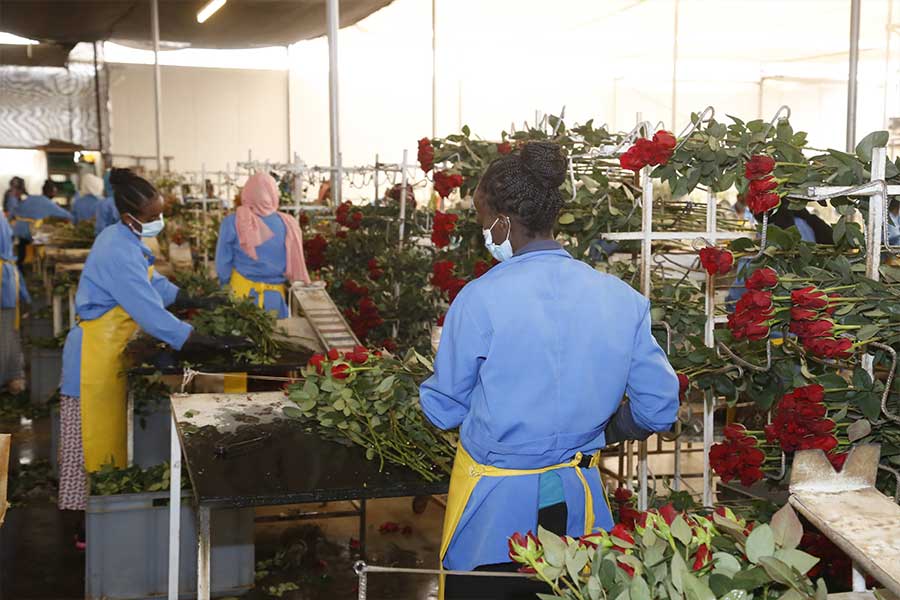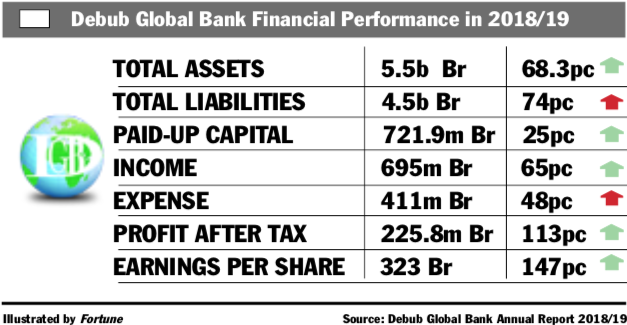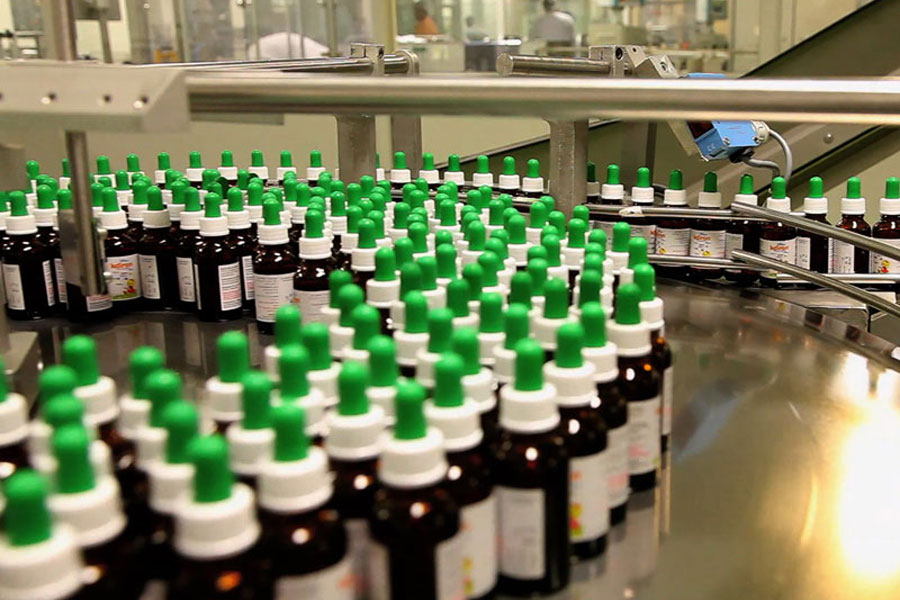
For Shemisu Tahir, who owns a grocery store inside the compound of Ayat Condominium, dealing with milk suppliers is no different from sucking the blood out of a stone. Persuading the agents tasked to distribute the milk by their respective companies requires an enormous amount of effort. His daily routine, in fact, starts with collecting his milk quota from the distributors, which have allocated 25 plastic bags (12.5 litres) of milk a day to his store.
“If I'm not around, they won’t wait for a second. They just move to the next shop,” says Shemisu, who admits that milk is now like a precious item due to a critical shortage of supply. “Whoever comes first will be served first since I always run out of stock, even before midday.”
Though not something that is uncommon, households in Addis Abeba, the biggest dairy market in the country, have recently been hit hard by a critical shortage of milk. The monthly consumption of liquid milk in the capital stands at 8.5lt per adult while the figure for the national average is even lower. Annual per capita consumption of milk in Ethiopia ranges between 19lt and 24lt, while it is 120lt and 180lt in the cases of Kenya and Sudan, respectively.
Achieving the daily needs of consumers, however, had never been easy for both producers and suppliers - becoming even more challenging with the growing size of the middle-income population group, which includes those employed as professionals and senior managers, or who generate income from their own establishments.
“Gone are the days when anyone can buy milk anytime they want,” said Shemisu. “Of dozens of consumers who wanted to buy milk, I am not even serving a tenth of them.”
Disappointed customers often blame him for this, though the supply shortage is entirely not his fault. It is rather the result of a drastic fall in the production of pasteurized milk by processors, whose number increased from just one to more than 30 over the last two decades.
Sandwiched between challenges, milk processors now operate at lower than half of their production capacity. Even though industry insiders cite that the sector requires low cost of production, has an abundance of existing opportunities, including the growth in demand for milk, yoghurt, and lifestyle products, and enjoys the availability of multiple market channels, industry players have not really benefited from it due to several challenges. The major one being a critical shortage of milk supply.
The number of pasteurised milk processors increased from just one to more than 30 over the last two decades.
“We're not even getting half of the milk supply we need,” says Hailu Eshetu, general manager of Family Milk, which has the capacity to produce 64,000lt of milk a day. “With the amount of milk which we are receiving now, it's possible that we could cease operations at any time. For instance, we closed our plant for almost a year due to the same reason.”
There are over 5,170 private farms that supply milk to the market in the capital. They produce 35 million litres of milk annually, out of which 73pc is sold to consumers, dairy companies and small stores that sell dairy products to households, 10pc is consumed by the farmers, 7.6pc is processed into butter and cheese, while the rest goes to calves.
Dairy companies usually source milk from collection points where smallholder farmers are expected to bring their output two hours after milking. But milk collection is unorganised, while the amount of milk supplied to dairy companies is hardly adequate; it is even declining. The fall in supply levels is caused by the low amount of money offered by milk processors, which pay between 20 Br a litre to cooperative unions, who could make 34 Br a litre if they sell to informal suppliers, cafés, or restaurants.
“The factories are offering us a price that is way below what we're being asked to pay by the farmers,” said Wondemineh Ashebir, chair person of Hibret Cooperatives Union, which collects milk from suppliers and sells it to households, cafés, and restaurants.
This, however, does not seem convincing to the dairy companies, including Elimtu Integrated Milk Industry, which was established 11 years ago with a capital of five million Birr, now reaching 65 million Birr.
“Competing with informal players is unthinkable for dairy companies since we produce in bulk and earn a relatively lower amount of profit margin. Forcing us to do so is no different from enforcing unfair trade practices,” said Alemu Assefa, general manager of Elimtu, which has the capacity to process 40,000lt of milk a day with over 90 employees but utilising only 62.5 pc of its installed capacity.
The informal buyers share that the unsatisfying amount of milk produced by farmers would not suffice even if it were to be fully supplied to the dairy market, chiefly due to shortage of feed for cows and the lack of use of modern breeding methods, including artificial insemination, to increase the productivity of cows.
Ethiopia is far behind in terms of milk production despite boasting the largest cattle population in Africa, having 7.1 million dairy cows and 12.5 million milking cows, producing 4.6 billion litres of milk annually, according to a study conducted by the Central Statistical Agency on 57,040 agricultural households in 2020. The milk yield of a single cow is less than 1.4lt a day, while it is as high as nine litres in Kenya and more than 20lt in South Africa.
Perhaps even more concerning is the growing practice of adulteration. Employed as a cheaper means to get more profit, the method is wreaking havoc on the dairy market as well as presenting a significant threat to public health.
“Although we know that some farmers mix water with milk to increase their output, we have no choice but to process what we've collected, just because there's no way to make a substitution,” said Alemu.
The Ethiopian Meat and Dairy Industry Development Institute is also aware of the problem.
“In our assessment undertaken on dairy farmers supplying to collection centres at Sululta, we discovered that the fat content of the milk was 1.8pc while it should have been double that,” Molla Gezie, head of the Quality Assurance and Laboratory Directorate at the Institute, told Fortune.
Water is not the only additive that suppliers are using water to squeeze an extra penny from their milk.
“Some suppliers and farmers add formalin to preserve the milk until it reaches processors. This might help them gain more profit but it has undesired consequences,” Professor of food microbiology, Dawit Abate (PhD), told Fortune. He remarked that those who use the formalin have even named it "yewetet medhanit" in Amharic, literally translating to "milk medicine."
The substance, which is a diluted form of formaldehyde, is being used to increase the shelf life for the long-distance transportation of milk as a cheaper alternative to refrigeration, antiseptics, disinfectants and preservatives. Formalin is highly toxic and can lead to gastrointestinal haemorrhage and cardiovascular collapse, as well as damage to the central nervous system, liver and kidneys. No specific antidote is available.
The significant health risks posed by adulteration are grave, and stakeholders need to work aggressively on awareness creation and regulation, according to Dawit.
Admitting the existence of such problems, Tariku Teka, deputy director of the Ethiopian Meat and Dairy Industry Development Institute, responded that efforts are underway to create awareness among farmers.
“We're providing training to them, though it is yet to bear fruit,” he said.
The federal government has drafted a law to control the adulteration of milk, though it is yet to be official, while the Oromia regional government has already enacted one to regulate quality, curb adulteration, and set standards for transport.
"We're currently training candidate inspectors," said Ayalew Asfaw, dairy product diversification team leader at the Institute.
But for the Professor, this is not enough.
“Besides working on increasing the knowledge and skills of farmers, it's important to give attention to quality rather than focusing only on increasing production,” he remarked. “Milk processors should be given a greater role in the value chain.”
PUBLISHED ON
May 08,2021 [ VOL
22 , NO
1097]

Radar | May 25,2024

Featured | Jan 07,2024

Fortune News | Jul 29,2023

Agenda | Feb 13,2021

Fortune News | Jan 25,2020

Fortune News | Oct 27,2024

Fortune News | Jun 08,2019

Featured | Jan 07,2023

Commentaries | Apr 17,2020

Viewpoints | Nov 11,2023

Dec 22 , 2024 . By TIZITA SHEWAFERAW
Charged with transforming colossal state-owned enterprises into modern and competitiv...

Aug 18 , 2024 . By AKSAH ITALO
Although predictable Yonas Zerihun's job in the ride-hailing service is not immune to...

Jul 28 , 2024 . By TIZITA SHEWAFERAW
Unhabitual, perhaps too many, Samuel Gebreyohannes, 38, used to occasionally enjoy a couple of beers at breakfast. However, he recently swit...

Jul 13 , 2024 . By AKSAH ITALO
Investors who rely on tractors, trucks, and field vehicles for commuting, transporting commodities, and f...

Jun 28 , 2025
Meseret Damtie, the assertive auditor general, has never been shy about naming names...

Jun 21 , 2025
A well-worn adage says, “Budget is not destiny, but it is direction.” Examining t...

Jun 14 , 2025
Yet again, the Horn of Africa is bracing for trouble. A region already frayed by wars...

Jun 7 , 2025
Few promises shine brighter in Addis Abeba than the pledge of a roof for every family...